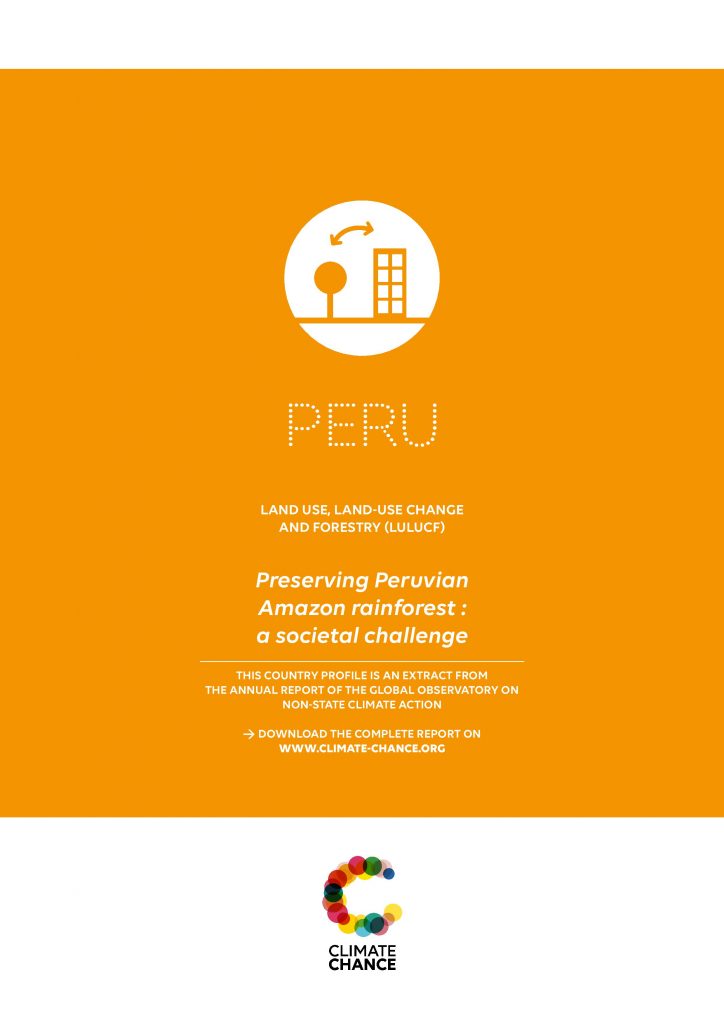Peru • Preserving the Amazon rainforest: a societal challenge
While deforestation and forest degradation are the largest source of CO2 emissions from Peru with 143,000 ha disappearing in 2017 alone out of the 69 million ha in the country, the target of 0% deforestation by 2021 proclaimed by the government appears ambitious.

Introduction
By hosting COP20 in Lima in 2014, Peru has taken the place of a leader in the fight against climate change in Latin America. While deforestation and forest degradation are the largest source of CO2 emissions from Peru with 143,000 ha disappearing in 2017 alone out of the 69 million ha in the country, the target of 0% deforestation by 2021 proclaimed by the government appears ambitious. The diversity of economic activities that destroy forests makes these goals difficult to achieve. Both industrial and family plantations of coffee, cocoa and palm oil, gold mining and logging operations each call for different measures. In parallel with the government setting up a legislative framework called the Framework Law on Climate Change of 2018 and the continued zonification of forests, NGOs, researchers, independent press, local authorities and local communities monitor, report and fight deforestation on the ground, often using the UNFCCC REDD+ program.
Contents
1 • Ambitious but sometimes conflicting national objectives
• Deforestation, the largest source of emissions
• Ambitious commitments and refining the legislative framework
2 • From multinationals to organised crime – drivers of deforestation
• Agricultural expansion
• Gold mining
• Timber logging
• Indirect drivers of deforestation
3 • The many types of battle against deforestation
• Researchers and NGOs organise real-time monitoring of deforestation
• The role of local authorities
• REDD+ – framework of preference for action by non-state actors
Conclusion
In conclusion, in recent years the Peruvian government has set up a rich institutional and legislative framework that should increase the government’s capacity in its fight against deforestation. However, this regulatory framework, is fragile in the face of the economic interests of local actors and the lack of cohesion between the different layers of government to enforce laws. Civil society plays a key role in stimulating environmental action by developing local forest conservation projects and developing alternatives for their sustainable exploitation and tools for monitoring deforestation. The link between local initiatives and the national framework will be crucial in the coming years for maintaining a dynamic that is currently still struggling to produce results.



